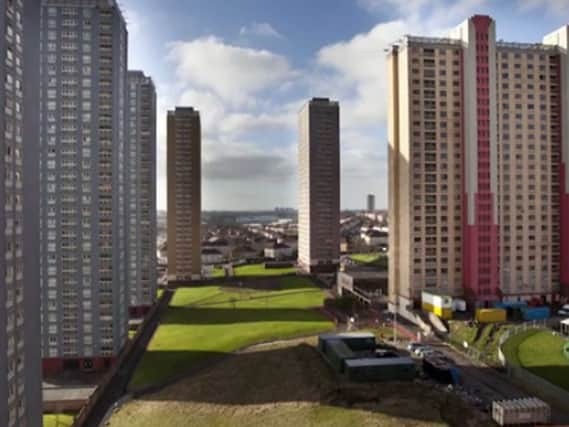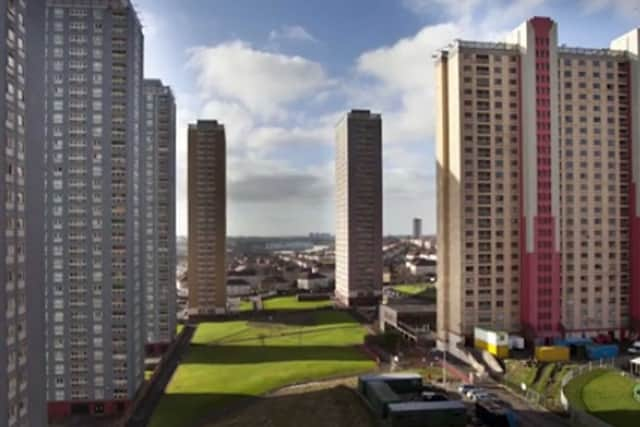Live demolition for Glasgow 2014 opening ceremony


In a bold move designed to tell the world the city is freeing itself from the shackles of post-war urban planning folly and “embracing the future”, five of the six remaining Red Road flats will be demolished live during the July spectacle. Some 1,250 kilograms of explosives will be strapped to the 30-storey structures, with nearly 900 homes evacuated on health and safety grounds.
Organisers of Glasgow 2014 and Glasgow Housing Association, the social landlord which owns the blocks, said it would serve as an “unforgettable statement” of the city’s changing narrative while dispensing with structures that are “no longer viable as modern homes”.
Advertisement
Hide AdAdvertisement
Hide AdBut despite claims the scheme will “forever” transform the skyline, one block will remain at the Balarnock site to house asylum seekers, with demolition at a later date.


The simultaneous controlled demolition will form a key element of the opening ceremony on 23 July, broadcast live on a 100-metre screen in Celtic Park as well as to a global television audience. It is expected that the landmark flats will be reduced to rubble in just 15 seconds.
Eileen Gallagher, a director on the Glasgow 2014 board, said: “By sharing the final moments of the Red Road flats with the world as part of the opening ceremony, Glasgow is proving it is a city that is proud of its history but doesn’t stand still. A city that is constantly regenerating, renewing and reinventing itself.”
Built between 1964 and 1969, the eight blocks of flats were among the highest structures in Europe at 292ft. They were designed to house 4,700 people but latterly far fewer remained there, after decades of the properties slipping into decline. The towers’ place in the city was immortalised in Andrea Arnold’s film Red Road.
Games organisers stressed the demolition would be a “respectful recognition and celebration of the role the flats have played in shaping the lives of thousands of city families” who lived there.
David Grevemberg, Glasgow 2014’s chief executive, said the plan was “daring” and “gallus”.
Gordon Matheson, the leader of Glasgow City Council, said the flats occupied an “iconic place” in Glasgow’s history, but demolition would “all but mark the end of high-rise living in the area”.
Alison Irvine, author of the novel This is Red Road, accused civic authorities of “trampling over the memories of people in the name of a Commonwealth Games spectacular”. She added: “I thought it was a late April Fool’s joke when I first heard. It feels crude, insensitive, blunt and shows a complete lack of understanding of the people who lived there and still live there.”
Advertisement
Hide AdAdvertisement
Hide AdMitch Miller, an artist and writer whose work has explored the social history of the flats, said:
“Really, what’s the message here? Glasgow, city of rubble?”
Playwright David Greig, whose play The Architect was inspired by Glasgow’s urban renewal policies, tweeted: “Trying to like the idea of the Red Road flat demolition being part of a symbolic rebirth of Glasgow but it’s too complicated.”
SEE ALSO